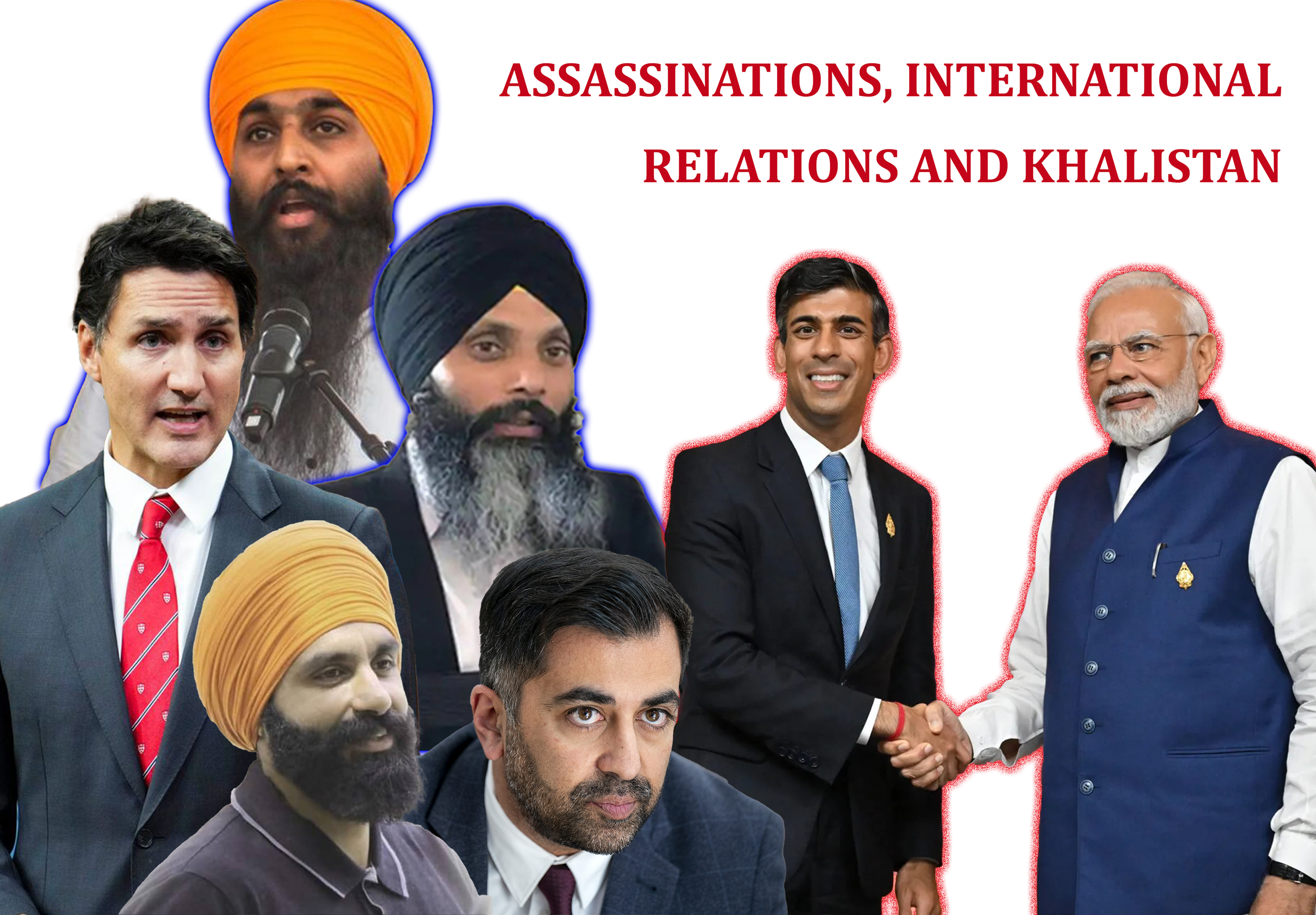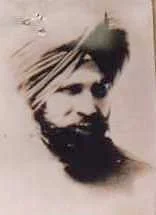Dharam Yudh to Bargadi: Panthic Morchay and the Role of Sikh Naujavan
/In recent years, we have steadily seen the simmering discontent of the Sikh panth boil over onto the streets of Punjab many times—sparking the frenzied outcries of the Indian establishment regarding the “revival of extremism” and its corresponding security crackdowns. From mobilizations against the execution of Sikh political prisoners in 2012, demands for their permanent release in 2013, and the recent Sarbat Khalsa in 2015, we have seen the Sikh panth mobilize in the masses to scream their rejection of India’s insidious claims that “all is well” in Punjab today. The recent gathering of over 250,000 Sikhs at the Bargadi morcha this month is just the latest example of the panth proclaiming: “ਜੰਗ ਜਾਰੀ ਹੈ 'ਤੇ ਜੰਗ ਜਾਰੀ ਰਹੇਗੀ… (the battle/struggle is ongoing and will continue).”
Highways across Punjab were blocked for miles on October 7, as Sikhs mobilized in support of the ongoing Bargadi morcha.
As we have seen with each mobilization, there is always a corresponding security crackdown by the state, varying levels of interference by Indian intelligence agencies, and the maneuvering of some traditional “panthic leaders” to convert the pain of the panth into electoral gains for themselves. One way or another, these outbursts gradually come to an end, sometimes gaining some concessions from the state, sometimes being violently repressed, or otherwise fizzling out.
While some lament these ebbs and flows as signs of weakness and disarray, I celebrate these moments of panthic jazba (passion/spirit) where the Khalsa retakes control of the streets and reminds the sarkar that: ਕੁੰਡਲੀਆ ਸੱਪ ਬੀਰ ਖਾਲਸਾ ਅਜੇ ਨਹੀਂ ਮਰਿਆ (the coiled serpent [the Khalsa] is not yet dead).
These critical voices raise crucial issues that need to be addressed without a doubt, but we need to carefully consider the context that these mobilizations are occurring in and the staggering odds that they are confronting. The first phase of the Sikh sangarsh for Khalistan gradually came to a standstill in the mid-90s due to the sheer violence that the Indian state inflicted on Punjab—literally hunting amritdhari naujavan with bounties on their heads. Our jujharoo Sikh leadership was murdered or forced into exile and the populace of Punjab has been subject to the omnipresence of state violence in their lives ever since. Every potential Sikh activist who gathers the courage to serve the panth in any way is sure to feel the heat and weight of the entire state machinery on their backs as soon as they step outside the boundaries of Indian nationalism. Since April 2017 alone, over 73 Sikh naujavan have been detained and incarcerated in India due to their panthic activism.
But these recent mobilizations not only proclaim to the world that we will not be defeated—they are also the training grounds and schools of a new generation of Sikh activists. We know the first phase of the sangarsh came to a relative standstill in the mid-90s and that we face a crisis of leadership today—we are rebuilding our collective capacity and institutions of struggle from scratch. It is only through this gruelling process that we will organically develop a new generation of panthic leadership.
While the work required for us to successfully pass through this period as the victors of history is endless, there is one task in particular that will be pivotal to our future goals.
In the past three years, we have seen the establishment of several bodies around the panthic world with broad mandates to govern and lead the panth. These “jathedars,” “councils,” “parliaments,” and “assemblies” operate under various names and claim different sources of legitimacy but they all mostly feature the same faces of the past twenty years and make new grand claims of a forthcoming panthic “revolution.”
These are useful endeavours, often with genuine intentions. But looking at our recent history, it is crucial that we take their self-glorifying declarations with a grain of salt. We have seen these same tactics, the same faces and the same rhetoric again and again, with the same levels of success: almost none. They bottle up the righteous rage of the panth in their bureaucratic “representative bodies” at key moments and sabotage every organic possibility of resistance at the grassroots. Gradually, they devolve into various splinter factions, continue to spew empty revolutionary rhetoric, and unilaterally pass grand resolutions and statements in the panth’s name, usually without much follow up action or accountability.
If we want to finally break this endless cycle, the first step in our path is for panthic naujavan around the world to refuse to be held hostage by the “old guard” any longer. We have to refuse attempts to channel the panth’s jazba and sacrifice into empty gestures which leave the status quo untouched. Instead, we have to commit to developing independent platforms that maintain their connections to the grassroots and place the pursuit of Sikh liberation as their first and foremost priority.
Shaheed Sant Jarnail Singh in Darbar Sahib surrounded by shastardhari Sikh naujavan.
Panthic naujavan have always been the driving force of Sikh history in every era we celebrate, and today is no different. But rather than taking the mantle of this responsibility, naujavan have been disenfranchised all over the world and left looking for guidance and legitimacy from established organizations rather than the other way around. The tides of change we hope to see in panthic politics today will not come from the worn out leaders who have done and accomplished what they could in their time. Many of them now simply seek to turn their radical pasts into stepping stones for electoral careers or simply maintain their reputations. Unfortunately, many have become toothless tigers.
This isn’t to say that the heirs of Baba Deep Singh have ceased to exist, or that naujavan should completely sideline their generation entirely. What this means is that while we are redrawing our panthic battle plans, naujavan must actively take responsibility and insert themselves into these processes—unless we’re content with nothing more than the formation of new political parties within the Indian electoral system. Naujavan must maintain panthic ekta (unity) while driving their own independent platforms to avoid being herded like sheep—merely raising their arms to ratify resolutions written and passed in backrooms by a select few. It is up to the naujavan to remind the panth and leadership of its roots and values, and hold the leadership accountable.
These ideas may seem sour to some but they are not without precedent. When we look at periods of Sikh sangarsh in the past, we have a number of naujavan leaders and jathebandian that continue to inspire us today—who drove the history of that entire period. The examples of Sant Jarnail Singh, Bhai Fauja Singh, Jathedar Talwinder Singh continue to light a spark in our hearts as they are the golden standard of panthic leadership. They are the examples we ought to look to for guidance today.
Shaheed Bhai Fauja Singh doing parchar during his imprisonment in Gurdaspur Jail (1977).
They became these examples and forever enshrined in our hearts, because they didn’t look to anyone else for answers other than Guru Granth-Panth. They were living embodiments of what it meant to be panthic. They didn’t pass their responsibilities on to others or complain that others are not doing what needs to be done. They did Ardaas and did it themselves. They maintained panthic ekta and participated in panthic movements, while maintaining their independent existence and leading by example.
And at no cost would they allow the established leadership to compromise on Sikh ideals or panthic goals for their own selfish interests or personal weaknesses.
Sant Jarnail Singh’s relationship with the Akalis is the perfect example of this. Throughout the Dharam Yudh Morcha, he was firm on maintaining panthic ekta and participating fully in the morcha but at no point in time did his identity and existence fade into merging wholeheartedly with the Akalis. He knew that the panth had lost faith in the established leadership due to their inability to put their selfish electoral interests aside in favour of the panth’s needs. Time after time, they had manipulated the jazba of the panth by trying to convert them into electoral gains. Instead, he rejected this path; he held them accountable at every step and would not let them sell the panth short. He regularly called himself the panth’s chaunkidar (watchman) because he refused to be drawn into the lure of electoral politics himself and wouldn’t allow the Akali’s to compromise on the panth’s political objectives either.
More than this though, he maintained an independent platform for panthic naujavan that established the standard of what panthic leadership looks like. He led by example and acknowledged Guru Granth-Panth as his only authority. He prioritized the Sikhi of the Sikh sangarsh and shifted the terrain of panthic politics from a meek performance of “grievances” and “demands” towards effecting a spiritual transformation in our political struggle for patshahi (sovereignty). Sikh political action would revolve solely around Granth-Panth as the source of justice and political power—not something to be granted to us by our oppressors.
He turned the locus of our attention away from grovelling to external powers towards cultivating our own collective power as the Guru Khalsa Panth.
This is the responsibility that naujavan bear today. While a host of political leaders are maneuvering to take credit for the massive turn out at Bargadi, it is clear that Sikhs are showing up in the thousands because of their panthic jazba and dard (pain/anguish)—just as they did in 2012, 2013, and 2015. These phenomena are way beyond the limited realms of electoral politics or the control of some self-appointed leaders. They are the uncontrollable manifestations of the Khalsa’s roh (rage/fury).
If we want to break the cycle and develop a mass movement that is capable of challenging the power of the Indian state and establishing our own raj, it will only be through the nidharrk (bold/fearless) leadership of those naujavan whose sole commitment is to Guru Granth-Panth. The Khalsa panth has only ever accepted the reigns of its leadership in the hands of selfless Gurmukh roohan (souls) and it is the responsibility of today’s Sikh naujavan to make sure this legacy is reflected in today’s reality.
Prabjot Singh
Sikh Liberation Front







